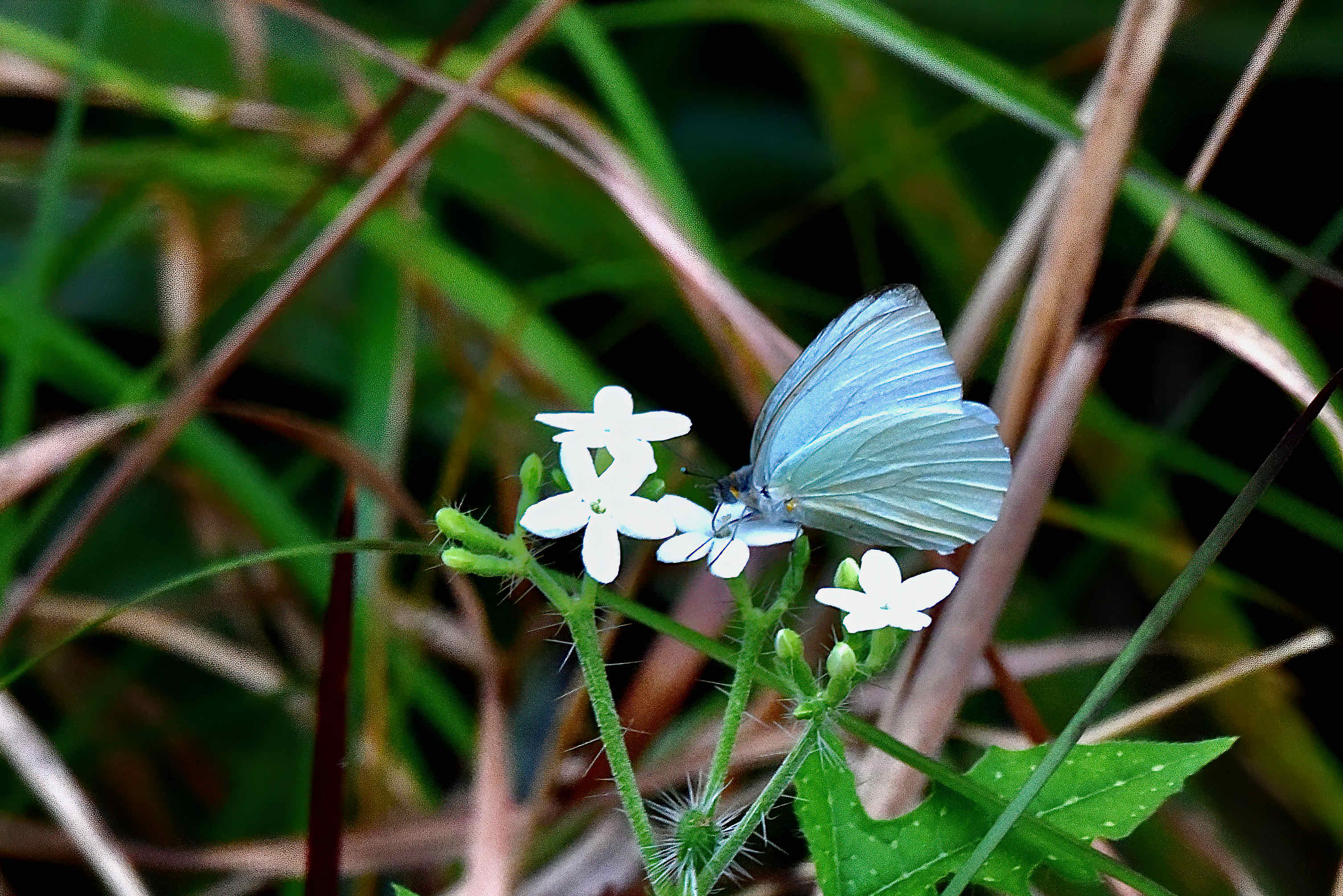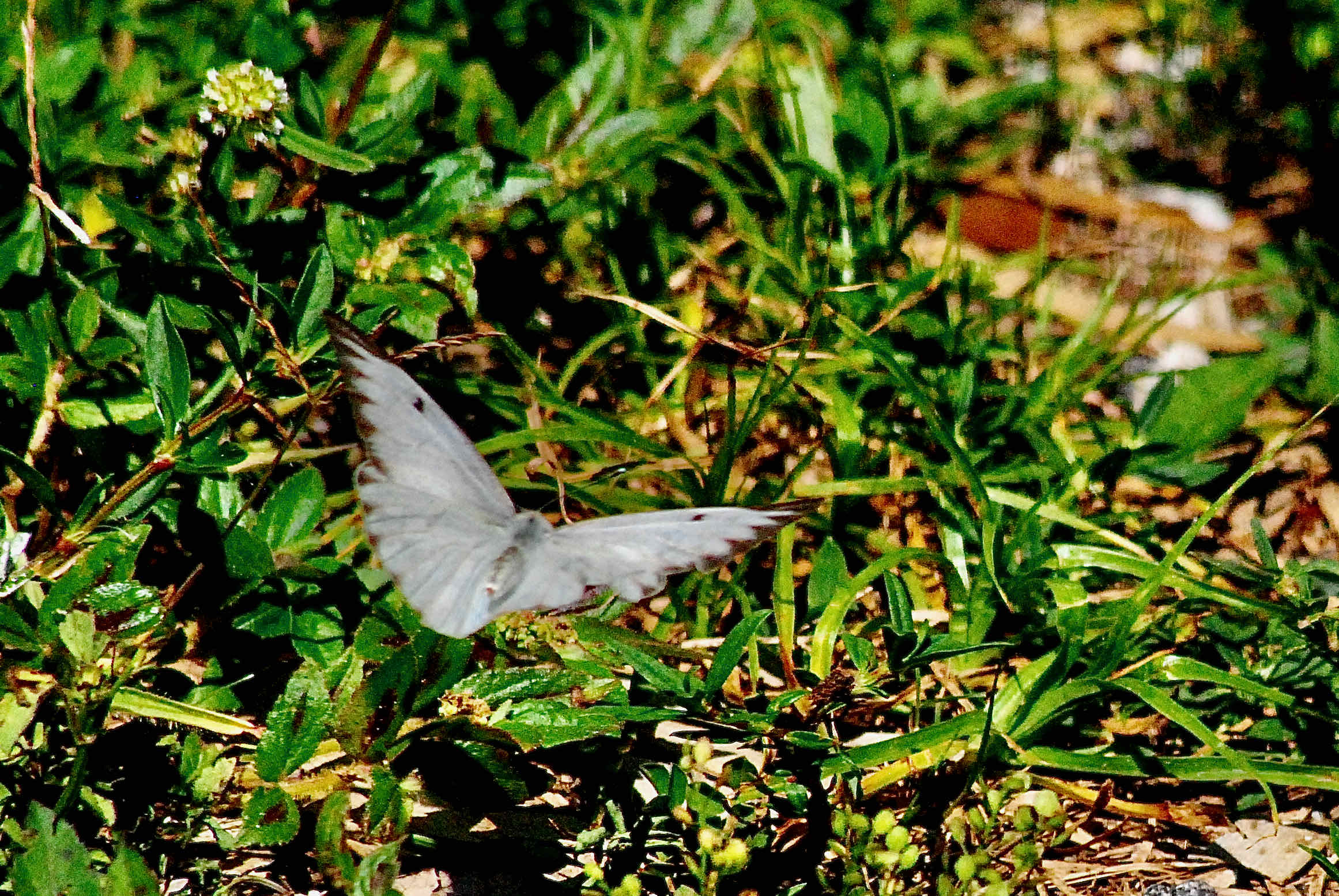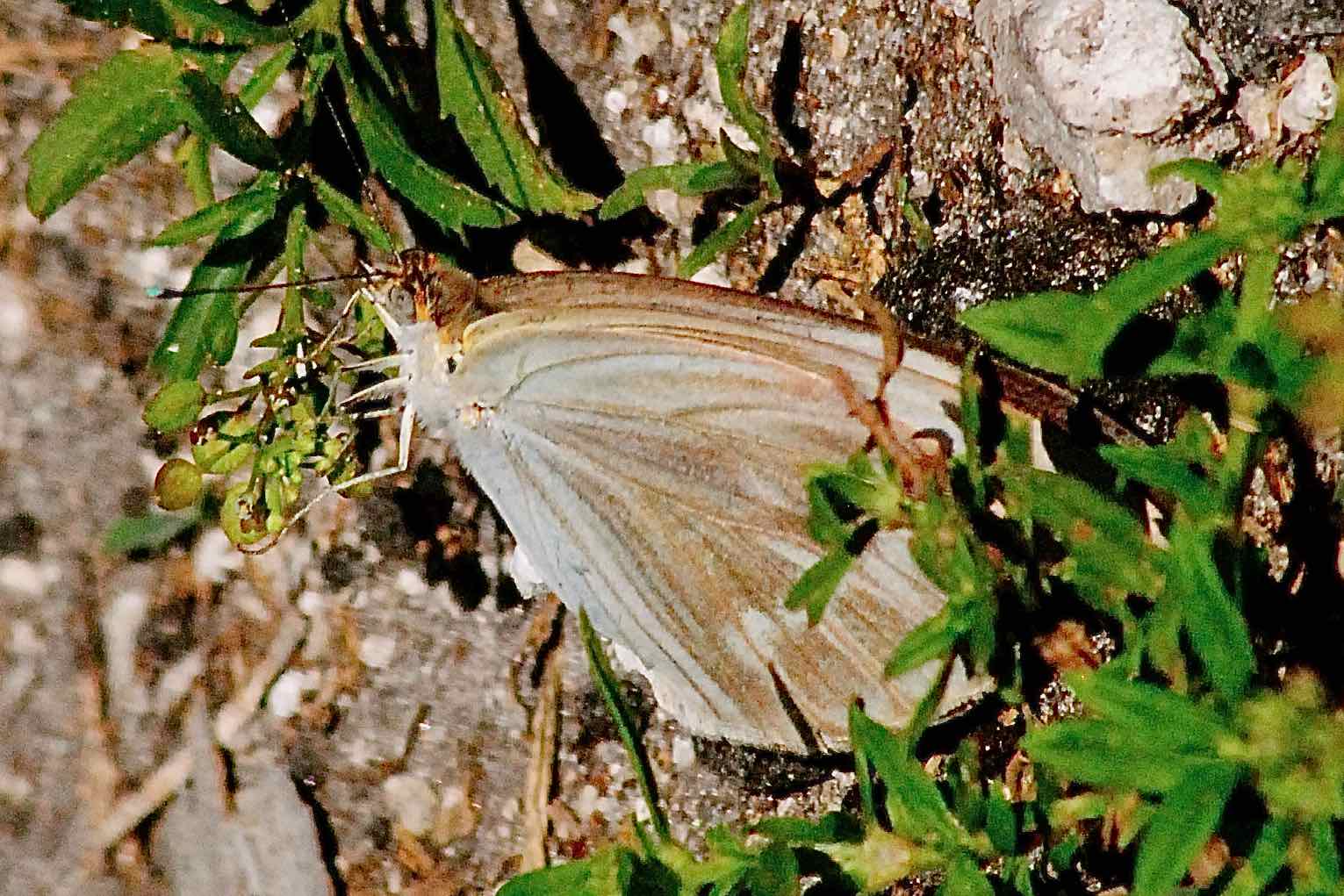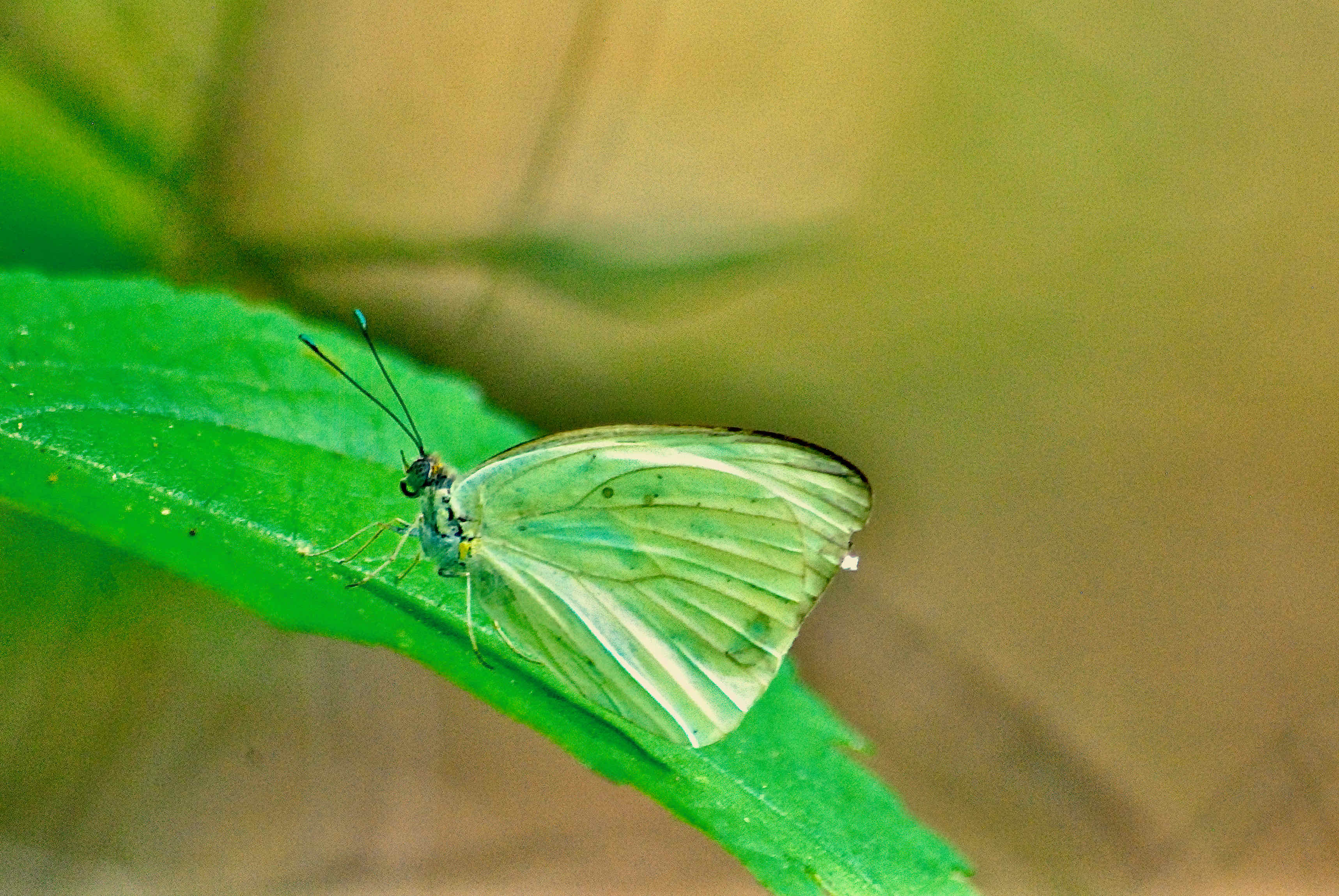
Great Southern white butterfly, photographed at Tomoka State Park, Ormond Beach, Volusia County, in March 2019.
This guy, the great southern white butterfly, could be coming to a wedding near you. As an invited guest, no less. The great southern, known to the scientific community as Ascia monuste, is one of the most commonly used butterflies for releases at weddings.
Can't say that we've seen a release first hand. As to why, it's all about symbolism, not that southern great whites are particularly symbolic. But they are common, and if you're going to sell a butterfly for release at a wedding, better to do it with one that's not on the edge of extinction.
The great southern looks white as it flutters about (less so when perched on a leaf), and white is symbolic of purity and the hopefulness of a new start in life. Butterflies generally — monarchs, julia and common buckeyes are also used at weddings — are symbols of transformation as they go from egg to caterpillar to pupae, emerging as a fully formed butterfly.
As we mentioned, it is among the more common butterflies in Florida, and in certain light, the southern great white reminds us of the inside of an oyster shell, with its subtle hues changing as light hits it.
It's a relatively large butterfly, with a wingspan that can exceed three inches. Males and females are the same size but have somewhat different looks; males are mostly white with a black edge along the apex of the forewing; in the dry season, females are similar. In the wet season, females become more grayish. Females also have a black spot near the apex of each forewing that are apparent when the wings are open. One cool feature of the great southern: the torquoise "clubs" atop their attennae, a characteristic both sexes share.
The southeastern United States is the northern most point of the range of this butterfly. Great southern whites can be found along the south Atlantic and Gulf coasts into Mexico, through the Caribbean, Central America and into South America. Great southern whites have been known to stray occasionally as far north as Maryland and as far west as Colorado.
Plants in the mustard family, including cabbage and virginia pepper, serve as host plants for great southern caterpillars. Females will lay as many as 20 eggs on the upper surfaces of leaves of the host, either singly or in small clusters.
Once they hatch, the young great southern whites begin chomping away at the host plant's leaves. Eggs are yellow; mature larvae, or caterpillars, are yellow with gray stripes that wrap around the body, with small black spots. Adults find the nectar of verbena and lantana and a few other flowers to be quite tasty.
In Florida, great southern whites are in flight, or active, throughout the year and produce multiple generations. Favored habitats include salt marshes, coastal dunes, open fields and gardens.
Great southern whites are members of the Pieridae, a family of white and sulphur butterflies, with 1,100 species mostly found in tropical places around the globe.



